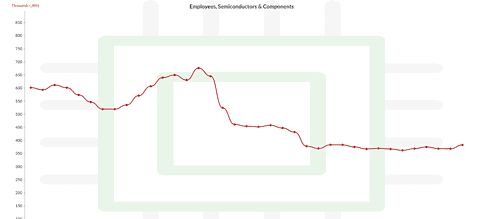Forgot Password

BCE cutting 4,800 jobs in biggest workforce restructuring in almost 30 years
BCE Inc. BCE-T is reducing its work force by 4,800 positions, its largest restructuring initiative in nearly 30 years, blaming a difficult economy and a regulatory requirement to open its network to competitors.
In an open letter to employees Thursday, president and chief executive officer Mirko Bibic called the decision “incredibly tough” and said that, wherever possible, the company would use vacancies and natural attrition to reduce its work force, which is being cut by 9 per cent.
“We continue to face a difficult economy and government and regulatory decisions that undermine investment in our networks, fail to support our media business in a time of crisis and fail to level the playing field with global tech giants,” Mr. Bibic wrote.
In a separate letter to Bell Media employees, president Sean Cohan said the company plans to sell 45 of its 103 radio stations to seven buyers, subject to approval by the Canadian Radio-television and Telecommunications Commission.
However, Robert Malcolmson, BCE’s chief legal and regulatory officer, said less than 10 per cent of the job cuts announced Thursday are at Bell Media.
Heritage Minister Pascale St-Onge said it’s a “dark day” for the BCE employees losing their jobs and she is “extremely disappointed in Bell Canada’s decision for many reasons.”
Ms. St-Onge said the government’s approval of acquisitions of radio and television stations came with promises of continued investment and delivery of news content, and now BCE is backing away from that commitment. She noted that cultural and news industries are “having a hard time.”
Thursday’s announcement marks the second round of restructuring at the telecom giant in eight months. Last June, BCE announced it was reducing its head count by roughly 1,300 positions, primarily in management, as a result of declining legacy phone revenues and losses in its news and radio operations.
The Montreal-based telco announced the job cuts Thursday as it reported a 23-per-cent year-over-year drop in fourth-quarter profit, to $435-million. BCE says it will save $150-million to $200-million in 2024 as a result of the restructuring.
Its shares fell more than 3 per cent, or $1.72, to $51.35 on the Toronto Stock Exchange in Thursday morning trading, extending a recent decline.
In his open letter, Mr. Bibic said: “Of particular concern is a recent decision by the CRTC forcing Bell to provide third-party resellers access to our high-speed fibre network before we have even had an opportunity to recoup our multibillion-dollar investment.”
Last week, BCE urged the federal cabinet to overturn the Nov. 6 CRTC decision, which requires the telco to provide competitors with access to its network in Ontario and Quebec at regulated rates. BCE has also asked the Federal Court for leave to appeal the decision. That case is still pending.
BCE has also curtailed its planned network expenditures by more than $1-billion over the next two years as a result of the decision.
Mr. Malcolmson said the rates set by the regulator don’t reflect “the true cost of building a brand-new network” or the “risk associated with building a network and then having to attract customers to that network.”
He added that the decision “disproportionately affects Bell” and could result in BCE’s competitors – including incumbent telcos such as Rogers Communications Inc. and Telus Corp. – riding on BCE’s infrastructure instead of building out their own networks.
If that transpires it would be “bad for the country,” Mr. Malcolmson said. “It will slow, in many areas, and stall altogether in other areas investment in next-generation networks.”
Although Telus T-T is also affected by the ruling, it has limited fibre-to-the-home infrastructure outside of Western Canada.
The interim decision by the CRTC was issued during a broader review of the wholesale regime for high-speed internet access, which will be the subject of a public hearing held by the regulator next week.
The CRTC said in a statement Thursday that it’s concerned about job losses, adding that it does not determine “how private companies allocate their profits.”
“The CRTC is an independent, quasi-judicial tribunal that regulates the broadcasting and telecommunications industries in the public interest,” the regulator said. “We hold public proceedings and make decisions based on broad public records. We will continue to fulfill our mandate for Canadians.”
<
p data-sophi-feature="interstitial">After layoffs, the bet on BCE shares rests on the dividend. And it’s a compelling bet
BCE boosted its dividend by 3.1 per cent for 2024 as it reported $6.47-billion of revenue during the three-month period ended Dec. 31, up 2 per cent from $6.44-billion a year earlier.
Its fourth-quarter profit amounted to 42 cents per share, down from 58 cents per share in the same period of 2022.
After adjusting for various items, including severance costs associated with last year’s job reductions, BCE had $691-million of profit, or 76 cents per share, up from $654-million, or 71 cents per share, during the same quarter in 2022.
Analysts had been expecting adjusted earnings of 73 cents per share and revenue of $6.47-billion, according to the consensus estimate from S&P Capital IQ.
The telco added 128,715 net new postpaid wireless customers during the quarter, down 16.8 per cent year over year from 154,617. (Postpaid subscribers are those who are billed at the end of the month for the services they used, whereas prepaid customers pay upfront for wireless services.)
The company attributed the decrease to a more competitive marketplace, noting that churn – the rate of customer turnover on a monthly basis – among its postpaid wireless customers increased 1.63 per cent during the quarter, compared with 1.22 per cent a year earlier.
Its prepaid customer base declined by 36,630 net subscribers, compared with a loss of 31,996 in the fourth quarter of 2022.
Scotiabank analyst Maher Yaghi said he expected 2024 to be a restructuring year for both BCE and Telus, which reports its results Friday, amid heightened competition in the sector.
Separately, Rogers RCI-B-T is offering a second round of voluntary severance packages to employees, after an initial offer last year.
In an e-mail to staff, CEO Tony Staffieri said, “We need to find efficiencies and drive continual improvements to how we work.” About 1,200 employees left Rogers last summer under the severance program, in the wake of its $20-billion takeover of Shaw Communications Inc.
“Rogers has been undergoing its own cost-cutting drive within its Shaw acquisition game plan,” Mr. Yaghi wrote in a note to clients.
Last week, Rogers reported higher revenue but a drop in profits as its deal with Shaw boosted its customer base while driving up costs.













